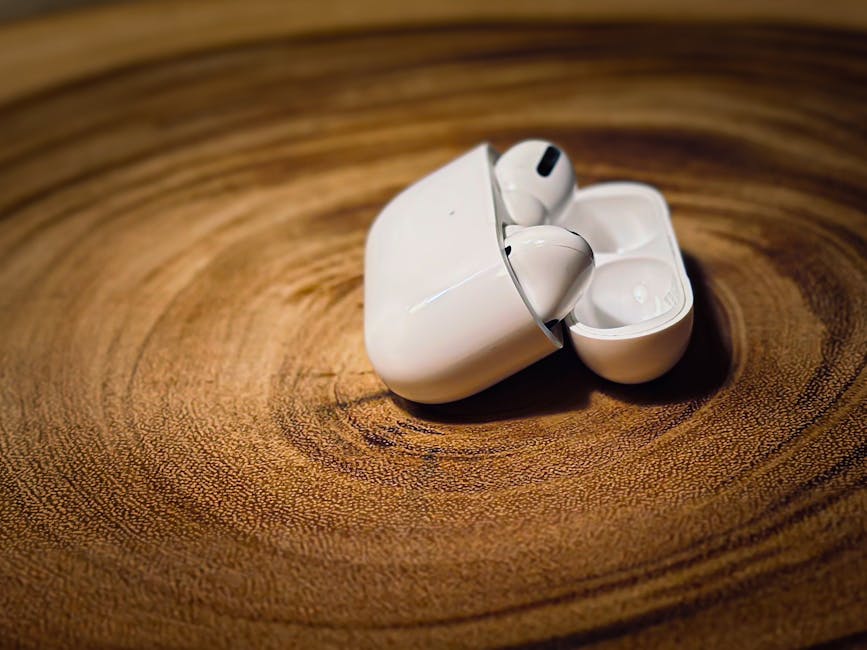
Managing Blood Pressure Through Lifestyle Changes
Managing Blood Pressure Through Lifestyle Changes
High blood pressure, or hypertension, is a common health issue that affects millions of people worldwide. If left uncontrolled, it can lead to serious complications such as heart disease, stroke, and kidney failure. While medications can help manage blood pressure, lifestyle changes play a crucial role in both prevention and treatment. This guide explores effective strategies to naturally lower and maintain healthy blood pressure through sustainable lifestyle adjustments.
Understanding Blood Pressure
Before diving into lifestyle modifications, it’s essential to understand what blood pressure is and why it matters.
What Is Blood Pressure?
Blood pressure measures the force of blood pushing against the walls of your arteries as your heart pumps. It is recorded as two numbers:
- Systolic pressure (top number): The pressure when your heart beats.
- Diastolic pressure (bottom number): The pressure when your heart rests between beats.
A normal blood pressure reading is around 120/80 mmHg. Readings consistently above 130/80 mmHg may indicate hypertension.
Why Is High Blood Pressure Dangerous?
Chronic high blood pressure strains the heart and damages blood vessels, increasing the risk of:
- Heart attack
- Stroke
- Kidney disease
- Vision loss
- Cognitive decline
Lifestyle Changes to Lower Blood Pressure
The good news is that many cases of high blood pressure can be managed—or even prevented—through lifestyle modifications. Below are the most effective strategies.
1. Adopt a Heart-Healthy Diet
What you eat significantly impacts blood pressure. The DASH (Dietary Approaches to Stop Hypertension) diet is specifically designed to lower blood pressure and includes:
- Fruits and vegetables (rich in potassium, which helps balance sodium)
- Whole grains (fiber supports heart health)
- Lean proteins (fish, poultry, beans)
- Low-fat dairy (calcium helps regulate blood pressure)
- Limited sodium, sugar, and saturated fats
Key Dietary Tips:
- Reduce processed foods (they often contain hidden sodium).
- Use herbs and spices instead of salt for flavor.
- Choose potassium-rich foods like bananas, spinach, and sweet potatoes.
2. Reduce Sodium Intake
Excess sodium causes the body to retain water, increasing blood pressure. The American Heart Association recommends no more than 2,300 mg per day, with an ideal limit of 1,500 mg for most adults.
How to Cut Back on Salt:
- Read nutrition labels carefully.
- Avoid canned soups, deli meats, and fast food.
- Cook meals at home to control salt content.
3. Exercise Regularly
Physical activity strengthens the heart, allowing it to pump blood more efficiently with less effort. Aim for:
- At least 150 minutes of moderate exercise per week (e.g., brisk walking, swimming, cycling).
- Strength training twice a week to improve circulation.
Best Exercises for Blood Pressure:
- Aerobic exercises (walking, jogging, dancing)
- Yoga and stretching (reduces stress, improves flexibility)
- Resistance training (light weights or bodyweight exercises)
4. Maintain a Healthy Weight
Excess weight forces the heart to work harder, increasing blood pressure. Losing even 5-10 pounds can make a significant difference.
Weight Management Tips:
- Track calorie intake vs. expenditure.
- Eat smaller portions and avoid late-night snacking.
- Combine diet and exercise for sustainable weight loss.
5. Limit Alcohol and Quit Smoking
- Alcohol: Excessive drinking raises blood pressure. Men should limit to 2 drinks per day, women to 1 drink per day.
- Smoking: Nicotine constricts blood vessels, increasing pressure. Quitting improves circulation and heart health.
6. Manage Stress
Chronic stress contributes to high blood pressure by triggering unhealthy habits like overeating or drinking.
Stress-Reduction Techniques:
- Deep breathing exercises
- Meditation or mindfulness
- Regular physical activity
- Adequate sleep (7-9 hours per night)
7. Monitor Blood Pressure at Home
Regular monitoring helps track progress and detect potential issues early.
- Use a reliable home blood pressure monitor.
- Keep a log of readings to share with your doctor.
- Measure at the same time each day for consistency.
When to Seek Medical Help
While lifestyle changes are powerful, some individuals may still need medication. Consult a doctor if:
- Blood pressure remains high despite lifestyle adjustments.
- You experience dizziness, severe headaches, or chest pain.
- You have additional risk factors (diabetes, family history).
Conclusion
Managing blood pressure through lifestyle changes is a proactive and effective approach to long-term health. By adopting a balanced diet, staying active, maintaining a healthy weight, and reducing stress, you can significantly lower your risk of hypertension-related complications. Small, consistent adjustments lead to lasting benefits, helping you live a healthier, more vibrant life.
Start today—your heart will thank you!# Managing Blood Pressure Through Lifestyle Changes
High blood pressure affects nearly half of American adults, yet many don’t realize they have it. Often called the “silent killer,” hypertension typically shows no symptoms while quietly damaging your arteries, heart, and other organs. The good news? You have more control than you might think. By making strategic lifestyle changes, you can significantly lower your numbers and reduce medication needs. This comprehensive guide walks you through evidence-based strategies that really work.
Understanding Your Numbers: The Blood Pressure Basics
What Do Those Numbers Mean?
Your blood pressure reading contains two important figures:
- Top number (systolic): Pressure when your heart beats
- Bottom number (diastolic): Pressure between beats
Recent guidelines categorize readings as:
✓ Normal: Below 120/80
✓ Elevated: 120-129/<80
✓ Stage 1 Hypertension: 130-139/80-89
✓ Stage 2 Hypertension: 140+/90+
Why It Matters More Than You Think
Uncontrolled high blood pressure:
• Increases stroke risk 4x
• Doubles heart attack risk
• Accelerates kidney damage
• Contributes to dementia
The Lifestyle Prescription: 7 Powerful Changes
1. Rethink Your Plate: The DASH Diet Difference
The gold-standard DASH diet can lower systolic BP by 8-14 points. Key components:
• Fruits & Vegetables: Aim for 4-5 servings of each daily
• Whole Grains: 6-8 servings
• Lean Proteins: Focus on fish, poultry, beans
• Low-Fat Dairy: 2-3 servings
• Healthy Fats: Nuts, seeds, olive oil
Pro Tip: The magic is in the minerals – potassium, magnesium and calcium all help regulate pressure.
2. Shake the Salt Habit
Most Americans consume 3,400mg sodium daily – way above the 1,500mg ideal limit. Hidden salt lurks in:
• Breads & rolls
• Pizza
• Sandwiches
• Processed snacks
• Restaurant meals
Salt-Swapping Strategies:
✓ Use herbs, spices, citrus instead of salt
✓ Rinse canned foods
✓ Choose “no salt added” versions
✓ Cook more meals at home
3. Move It to Lose It (Pressure)
Regular exercise can lower BP 5-8 points. The sweet spot:
• 150 minutes weekly moderate activity OR
• 75 minutes vigorous activity PLUS
• Strength training 2x/week
Best BP-Lowering Exercises:
- Brisk walking (try 10,000 steps daily)
- Swimming (easy on joints)
- Cycling (outdoor or stationary)
- Dancing (fun cardio)
- Yoga (reduces stress too)
4. Weight Matters More Than You Think
Losing just 5-10 pounds can make a noticeable difference. Each pound lost typically drops systolic BP by about 1 point.
Smart Weight Loss Tips:
• Use smaller plates
• Eat slowly (20 minutes per meal)
• Keep a food journal
• Prioritize protein and fiber
• Stay hydrated
5. Alcohol: Less Is More
While moderate drinking may have heart benefits, excessive alcohol raises BP. Limits:
• Men: ≤2 drinks/day
• Women: ≤1 drink/day
(1 drink = 12oz beer, 5oz wine, 1.5oz liquor)
6. Stress Less, Live More
Chronic stress keeps your body in “fight or flight” mode, elevating BP. Try these science-backed stress busters:
• 4-7-8 Breathing: Inhale 4 sec, hold 7, exhale 8
• Progressive Muscle Relaxation
• Daily Gratitude Practice
• Nature Walks
• Laughter Therapy
7. Sleep: The Missing Link
Poor sleep quality is strongly linked to hypertension. Aim for 7-9 hours nightly with these tips:
✓ Maintain consistent sleep schedule
✓ Create a cool, dark sleeping environment
✓ Limit screens before bed
✓ Avoid large meals and alcohol near bedtime
Beyond Basics: Advanced Strategies
Try the Beetroot Boost
Studies show beetroot juice (rich in nitrates) can lower systolic BP by 4-5 points within hours, with effects lasting up to 24 hours.
Dark Chocolate Delight
Flavanol-rich dark chocolate (70%+ cocoa) in moderation may improve blood vessel function.
Monitor Like a Pro
Home monitoring provides better data than occasional clinic checks. Follow these rules:
• Measure at same time daily
• Sit quietly 5 minutes first
• Use a validated upper-arm cuff
• Avoid caffeine, exercise 30 minutes prior
When to Seek Medical Help
While lifestyle changes are powerful, consult your doctor if:
• Your BP remains ≥130/80 despite changes
• You experience symptoms like severe headaches or vision changes
• You have other conditions like diabetes or kidney disease
Remember: Lifestyle changes work best when combined with medical advice. Some people will still need medication, and that’s okay.
The Bottom Line
You’re not powerless against high blood pressure. By implementing these research-backed lifestyle strategies, you can:
✓ Lower your BP naturally
✓ Reduce medication needs
✓ Decrease heart disease risk
✓ Improve overall health
Start with one or two changes today, and build from there. Your future self will thank you for every positive choice you make now. Small steps lead to big results when it comes to blood pressure control.







